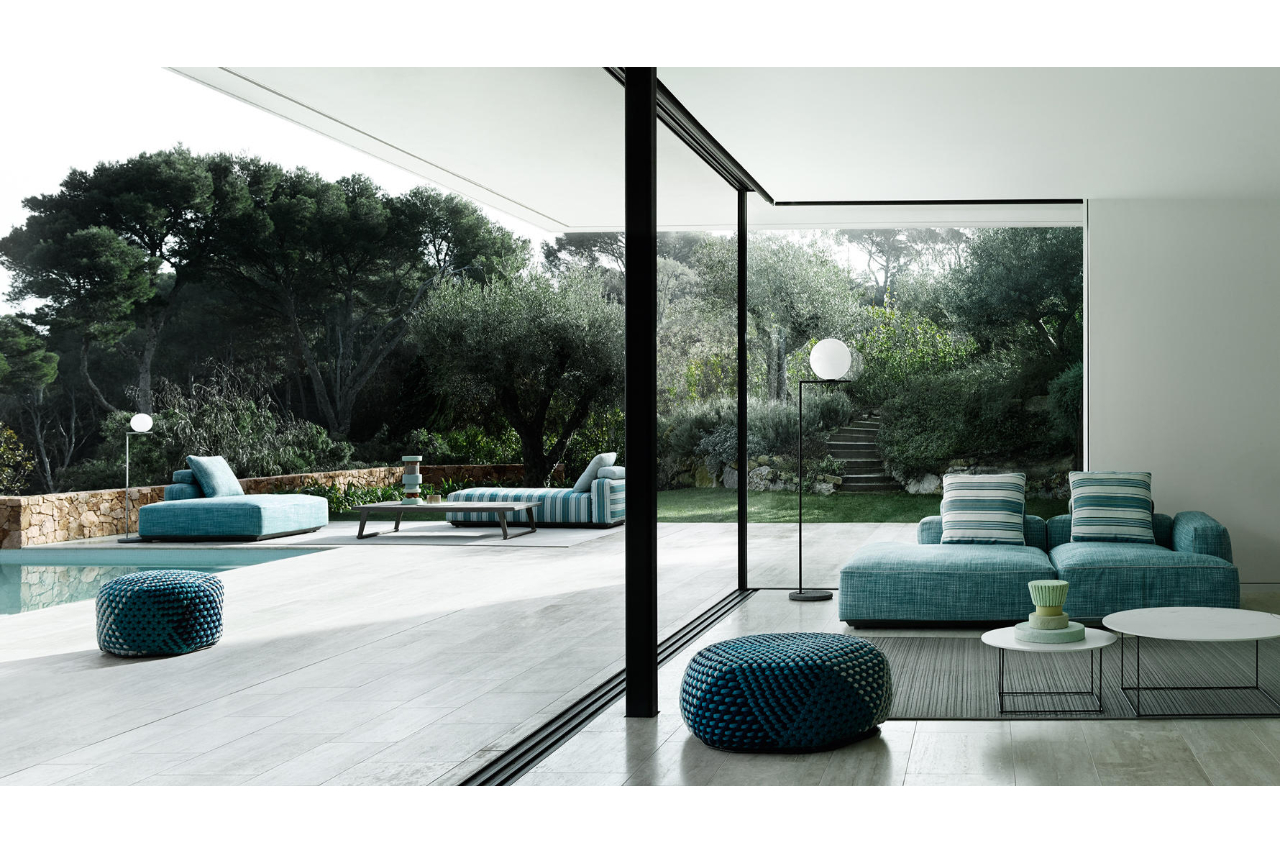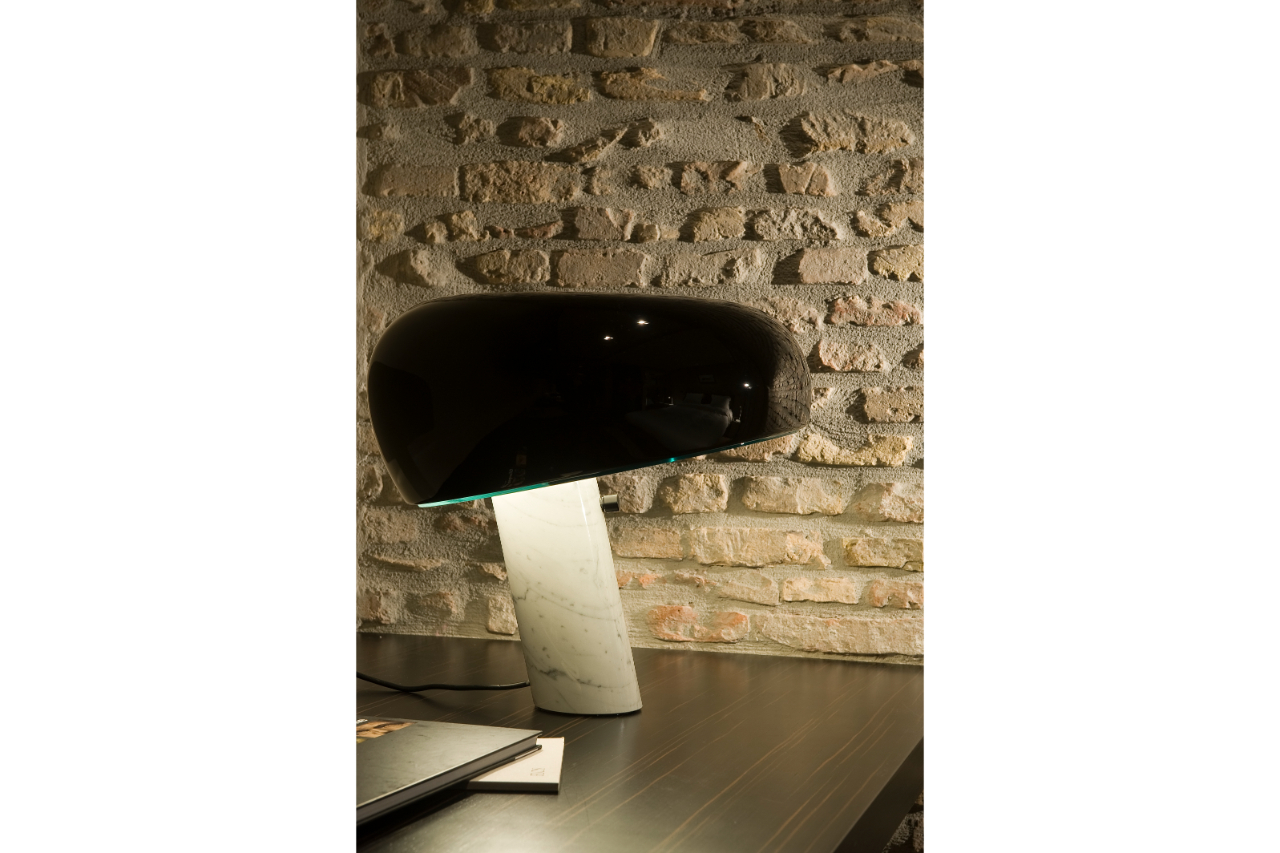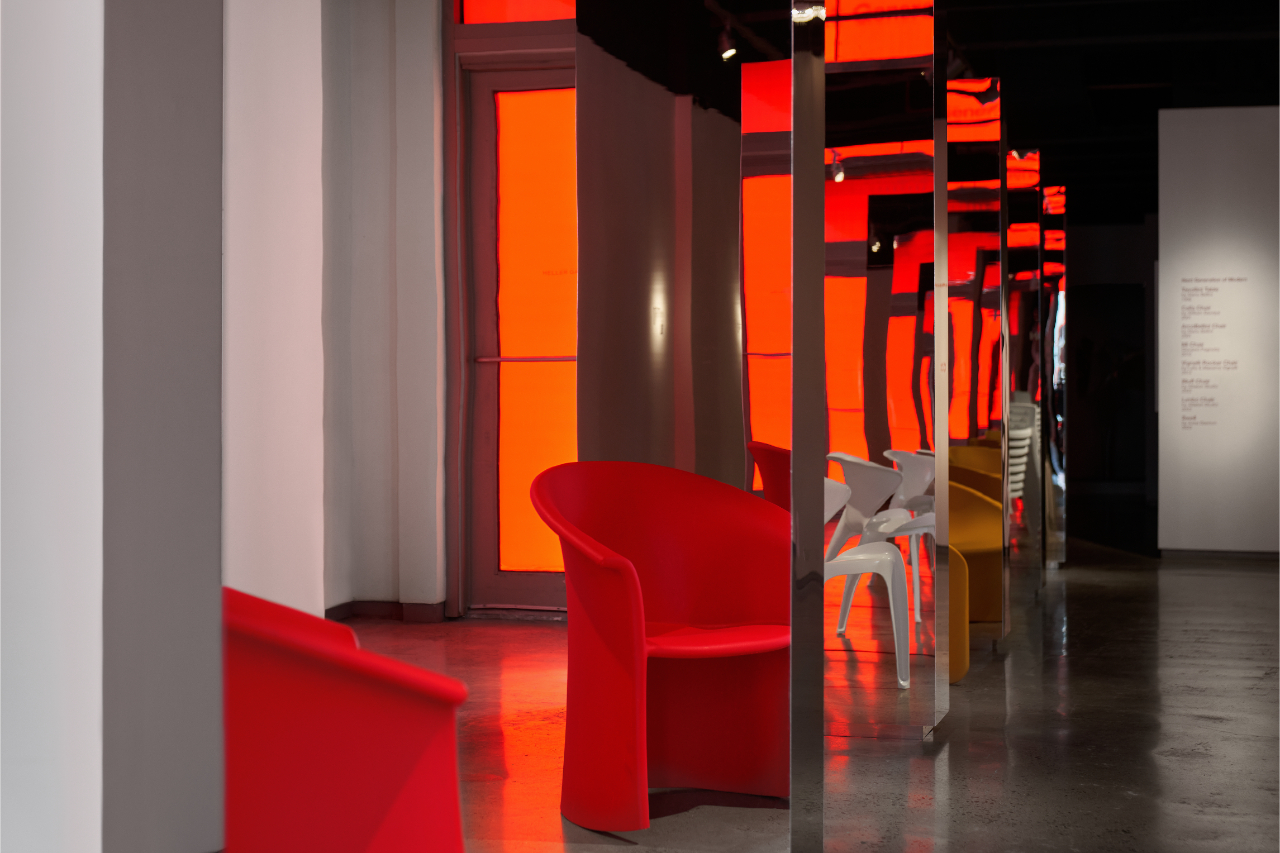


.jpg)
In recent years, Italian design and the "Made in Italy" label have captured significant attention in the U.S., celebrated for luxury, quality, and originality.
Italian products merge aesthetic beauty, functionality, and superior craftsmanship. We spoke with sector experts Beth Dickstein, Alex Lubarsky, and Dan Rubinstein, who have extensive experience in the U.S. market, to explore what "Made in Italy" means to American consumers and the themes that captivate them.
Interview by Akgün Akdil
What is the Italian design that appeals to the United States?
Italian design has a global appeal as it is inherent in fashion, cars, furnishings and even wine! Italian design is known for its craftsmanship, creativity, and timelessness. In design, furnishings, lighting, and some accessories. As the Italian design is so sophisticated, it has greater appeal in urban areas.
What types of objects, materials, styles, and brands are currently popular in the U.S. market?
U.S. market looks for flexible spaces for homes (and offices). For example, needing to work remotely for 2 or more days, those with limited space may use a guest room as their office space as well. For some apartment dwellers, a part of their dining room, kitchen or even bedroom provides a space for work. Sustainable materials are important to the North American market. They look at raw materials such as sustainably-sourced wood, recycled plastic, bamboo, and the like. LED or Compact Fluorescent Lighting (CFL) which are energy efficient are important in lighting purchases. CFL bulbs are also recyclable. Packaging is also something consumers look for to use recyclable materials and less material that reduces shipping costs. As the U.S. has a diverse population, it is hard to give any one style, though contemporary or modern design is more prevalent in urban areas. From an Italian brand perspective, particularly where originality and quality are important, interior designers and architects favor several key brands such as B&B Italia, Poliform, and others for furniture and in lighting, Flos, Artemide, etc. There are key retailers for this end of the market as well, such as Design Within Reach, and e-tailers like Lumens, Hive Modern, etc. American brands such as Restoration Hardware, Perigold and Wayfair are popular, though it seems not all of their product lines are originally designed. A well-priced American design brand with original design is Blu Dot, with several stores in the U.S. and I’ve been hearing more about Arhaus. Architectural Digest published this list of independent retailers, some with stores in multiple cities.
What new trends or products are capturing the interest of American consumers?
Again, sustainability is key in America. There are new companies in this field, and one that has prominently been marketing in various industries is MycoWorks, mycelium material with the touch and performance of fine leather yet made from the root structure of mushrooms. With over 100 million people in the U.S. having some type of allergy*, there is a new movement toward more allergy free homes, which one designer from New York, Uli Wagner, is the first to receive certification for is Allergy Friendly Building Alliance . Vintage continues to be popular with upstarts such as Rarify and Modern Hill Furniture capturing attention. The latter also does restoration that furthers the idea of quality materials, well made, originally designed furnishings are the most sustainable. There is a trend towards color. While there was a time that most furnishings were “beige” and accessories stainless steel to reflect modern design, there is a movement to add color to the home reflecting on the individual’s personality. Outdoor/indoor. Because outdoor furnishings need to be durable, some are looking to incorporate them in their homes. Where space permits!
In your opinion, what is the best concept or theme to focus on when promoting Italian design in the U.S.?
It has been my experience that honest, direct marketing is the best way to promote Italian or any design. Today’s younger generation of buyers want authentic messaging that makes them feel the company is speaking “to” them rather than “at” them. We are seeing more successful marketing events being away from the showrooms and stores to more interesting locations and the themes being more innovative, engaging them and less “direct” selling them. With the plethora of Zoom we all recently – and still are witnessing – live panel discussions should be elevated level, to the selected audience (no matter what the number of attendees is) and well organized.
What challenges do Italian entrepreneurs face when introducing their designs to the U.S. market?
The same challenges all companies are now facing, that is: breaking through all the marketing and messaging that is being sent. We experienced a successful re-launch of Heller by its new owner, which launched at ICFF in 2023 with a new product, simultaneously having an exhibition and lively party at Heller Gallery. We continued with a strong social media presence, while participating in select global trade shows, entering (and winning) US award competitions, and carefully continuing with consistent non-intrusive messaging. With Ligne Roset, we do have select events in the showrooms, but also once a year, bring editors and influencers to Paris, where Ligne Roset shows their new collection to their worldwide dealers at Palais de Tokyo. The editors and influencers get to speak directly with the co-CEO’s, dine with the American Senior Vice President and see the new collection…and Paris! Back in the U.S., we augment showroom events, with events at select locations outside of the showroom and invite small groups of architects and designers. It’s intimate and we see smaller groups reap greater results in sales. We find factory visits, with, again, a small number of architects, designers, and we add media to be effective in intimately learning about the brand from people who are most likely to specify, buy or write about it.
Can you share any successful strategies you've used to market Italian design in the U.S.?
We have had success with micro and macro influencers rather than mega influencers. We vet them for their interest in design and most often, get more postings, for a longer time, than agreed to. For our firm, marketing, promoting, and selling is a multi-prong approach. Further, knowing who you want to sell to is key. Targeting, we find, is better than “blasting”.
What advice would you give to new Italian entrepreneurs looking to enter the U.S. market?
Come to the U.S. (and Canada) and observe first. I always say, “walk before you run.”. Everyone knows someone that would introduce you to people in 5-6 key cities. Spend at least 2-4 days in each city, have meaningful conversations, ask a lot of questions and truly listen to the answers. When you return to Italy, sit with your best advisors, who, hopefully with different opinions.I advise not to “overthink” but go with your “gut.” The North American market is important (do not forget Canada!) to anyone doing business in design. Good luck!
What is the Italian design that appeals to the United States?
Italian design appeals to the United States due to its unique combination of aesthetic beauty, functionality, and superior craftsmanship. Synonymous with luxury, quality, and originality, Italian products bring a sense of elegance and sophistication that is highly valued by U.S. consumers.
What types of objects, materials, styles, and brands are currently popular in the U.S. market?
Popular design objects include those from Alessi, Seletti, Kartell, Magis, and Fornasetti. Home, furniture, and lighting brands like Cassina, Moroso, Poltrona Frau, B&B Italia, Artemide, Flos, and Kartell are also highly favored. In kitchenware, Alessi, Guzzini, and Mepra stand out. Materials such as Italian leather, Murano glass, and Carrara marble are very popular. Styles like modern minimalism with sleek lines and functional design, as well as bold, playful, and eclectic designs emphasizing artisanal craftsmanship, are trending.
What new trends or products are capturing the interest of American consumers?
American consumers are gravitating towards products that enhance their lifestyle, health, and well-being, with a significant focus on sustainability and technology. Eco-friendly goods, smart home devices, personalized items, and health-focused gadgets reflect a blend of practicality, innovation, and conscious living.
In your opinion, what is the best concept or theme to focus on when promoting Italian design in the U.S.?
"Timeless Elegance Meets Modern Innovation" is a powerful concept. Highlight the impeccable craftsmanship, luxurious materials, and innovative styles that seamlessly blend tradition with contemporary flair, appealing to sophisticated tastes and the desire for unique, high-quality products.
What challenges do Italian entrepreneurs face when introducing their designs to the U.S. market?
Challenges include understanding American consumer preferences, particularly price consciousness, navigating complex import regulations, meeting safety standards and compliance, competing with established local brands, managing high shipping costs, and bridging cultural differences in marketing and communication styles, as well as dealing with the presence of knockoffs.
Can you share any successful strategies you've used to market Italian design in the U.S.?
First of all, our business name is Speranza. We scout the market for Italian products from established companies like Alessi and Kartell, as well as younger brands like Seletti, Qeeboo, and Covo. We present our customers with a curated collection that combines unique Italian aesthetics and originality with great value.
What advice would you give to new Italian entrepreneurs looking to enter the U.S. market?
Understand American consumer preferences and market trends. Emphasize quality and unique design in marketing. Collaborate with local partners to navigate regulations and distribution. Invest in a strong online presence and social media. Be adaptable and responsive to feedback.
Why does Italian design appeal to consumers in the United States?
I think Italian design, especially today, isn’t just about a particular look anymore. Intead, it’s about a degree of quality in the way things are made and the way in which the design is considered. I’ve had many guests on my podcast, The Grand Tourist, who are either Italian designers or work a lot with Italian brands, including Piero Lissoni, Patricia Urquiola, and Philippe Starck. Each of them has a special ability to consider products that will be in production for years to come, and therefore I think consumers also believe that their products will last and have value in their homes and in their lives.
What types of objects, materials, styles, and brands are currently popular in the U.S. market?
In the US, everything is popular at the same time. We have so many different market segments and geographic regions, each with their own sense of style and different requirements. What’s popular in Los Angeles or Chicago might not be as popular in New York or Miami. Brands that want to expand to the US need to understand these different needs and communities to be successful. Brands also need to have the right partners and truly “put down roots” in the areas where they want to have an impact.
What new trends or products are capturing the interest of American consumers?
The outdoor market continues to grow, and I think any kind of design that really helps people work from home is also going to show growth. Many Americans have a flexible work culture and the options on the market aren’t always the best designed. But it’s such a large market, it’s not always about finding the right trend, but about finding the right audience.
In your opinion, what is the best concept or theme to focus on when promoting Italian design in the U.S.?
Unlike most of Europe, interior designers are a major influence on how people think about design. We’re also fairly advanced in terms of social media compared to other countries. And interior designers are also very influential on platforms like Instagram and so on. So when you combine these two things I think it can be very powerful. When promoting, people should think about what kinds of images and narratives they’re creating and how these assets will be used. If your sofa and the communications about that sofa look identical to any other brand, that could be a problem.
What challenges do Italian entrepreneurs face when introducing their designs to the U.S. market?
One of the great things about the US market is its size. But that’s also a problem, too. It takes a large effort to build a foundation for a business and the costs can be high. Also, Americans are much more accustomed to purchasing things online and communicating digitally and directly with brands, including social media. So if a smaller Italian brand doesn’t have these things set up, that can slow down progress in building a business here.
Can you share any successful strategies you've used to market Italian design in the U.S.?
In terms of media and communication today, I think we live in what is referred to as a “personality economy.” That means that what creates interest today are people and their experiences, and their points of view, instead of just objects and trends. So with The Grand Tourist we lean into that. We host designer and influencer dinners in various cities around the country and any major market where design events are happening. We also host showroom panel discussions, create custom content, and do white-label consulting for various brands that want to reach the right audiences. But we don’t just reach the US market, however. I usually need to remind people that 55% of my audience is from the States, and the rest being from the UK, Australia, and throughout the EU. An appreciation of good design and culture is universal.
What advice would you give to new Italian entrepreneurs looking to enter the U.S. market?
Have patience, and really listen to the people you meet here. The brands that do this can really make an impact.
Sergio Mannino is an Italian architect and designer who has mastered the intricacies of the retail and merchandising industry. A true visionary, he deeply understands each brand's story and seamlessly integrates it with contemporary innovations.
Learn more
In the United States, department stores are downsizing while small retail is seeing a revival.These are independent stores, frequently managed by experts from the design industry, who are on the lookout for high-quality, unique, sustainable Italian items. Paolo Cravedi, brand ambassador of Milano Home, tells us about it.
Read more